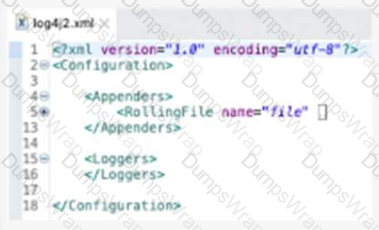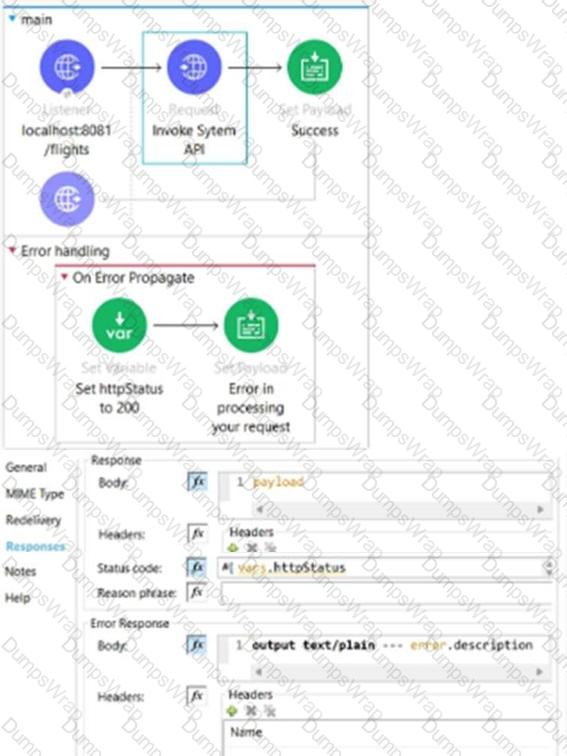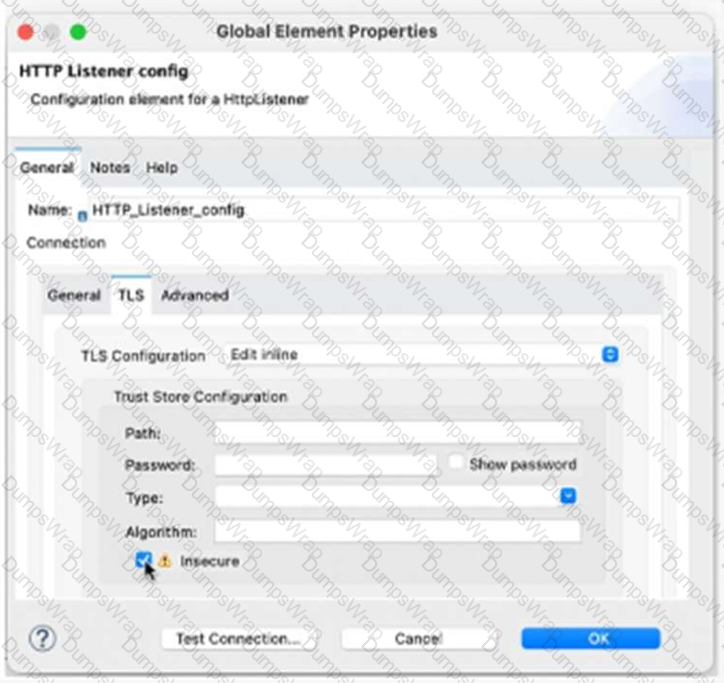Salesforce Certified MuleSoft Developer 2 (SU24) Questions and Answers
A Mule API receives a JSON payload and updates the target system with the payload. The developer uses JSON schemas to ensure the data is valid.
How can the data be validation before posting to the target system?
Which command is used to convert a JKS keystore to PKCS12?
Refer to the exhibit.
What action must be performed to log all the errors raised by the VM Connector?

Refer to the exhibit.
A Mute Object Store is configured with an entry TTL of one second and an expiration interval of 30 seconds.
What is the result of the flow if processing between os’store and os:retrieve takes 10 seconds?

A heathcare customer wants to use hospital system data, which includes code that was developed using legacy tools and methods. The customer has created reusable Java libraries in order to read the data from the system.
What is the most effective way to develop an API retrieve the data from the hospital system?
Which statement is true when working with correlation IDS?
Which statement is true about using mutual TLS to secure an application?
Refer to the exhibit.

The flow name is ‘’implementation’’ with code for the MUnit test case.
When the MUnit test case is executed, what is the expected result?
An API has been developed and deployed to CloudHub Among the policies applied to this API is an allowlist of IP addresses. A developer wants to run a test in Anypoint Studio and does not want any policies applied because their workstation is not included in the allowlist.
What must the developer do in order to run this test locally without the policies applied?
An organization uses CloudHub to deploy all of its applications.
How can a common-global-handler flow be configured so that it can be reused across all of the organization’s deployed applications?
The HTTP Request operation raises an HTTP CONNECTIVITY error.
Which HTTP status code and body are returned to the web client?

Refer to the exhibit.
What is the result if ‘’Insecure’’ selected as part of the HTTP Listener configuration?

Which properties are mandatory on the HTTP Connector configuration in order to use the OAuth 2.0 Authorization Code grant type for authentication?
Which statement is true when using XML SDK for creating custom message processors?
Which plugin or dependency is required to unit test modules created with XML SDK?
When implementing a synchronous API where the event source is an HTTP Listener, a developer needs to return the same correlation ID back to the caller in the HTTP response header.
How can this be achieved?
A Mule application deployed to a standardalone Mule runtime uses VM queues to publish messages to be consumed asynchronously by another flow.
In the case of a system failure, what will happen to in-flight messages in the VM queues that have been consumed?
A Mule application for processing orders must log the order ID for every log message output.
What is a best practice to enrich every log message with the order ID?

